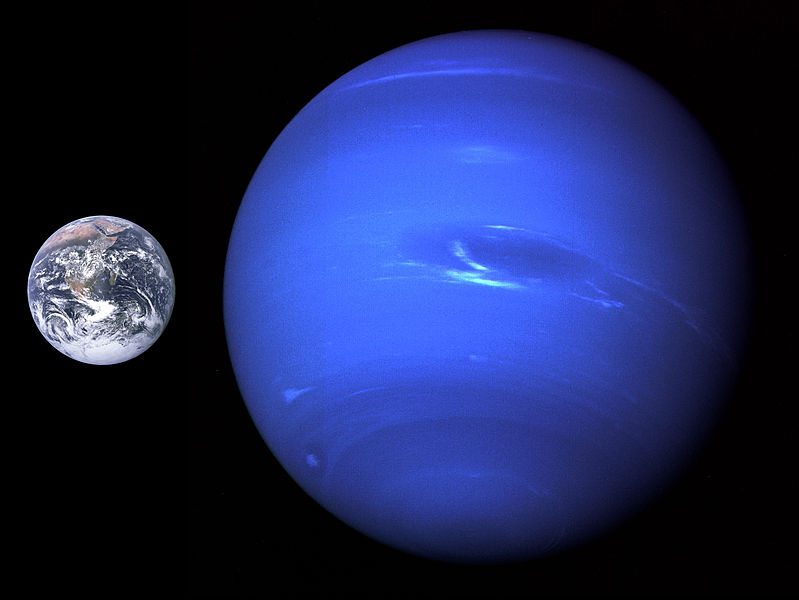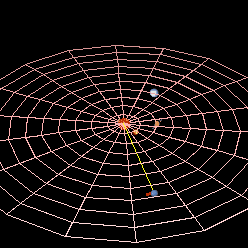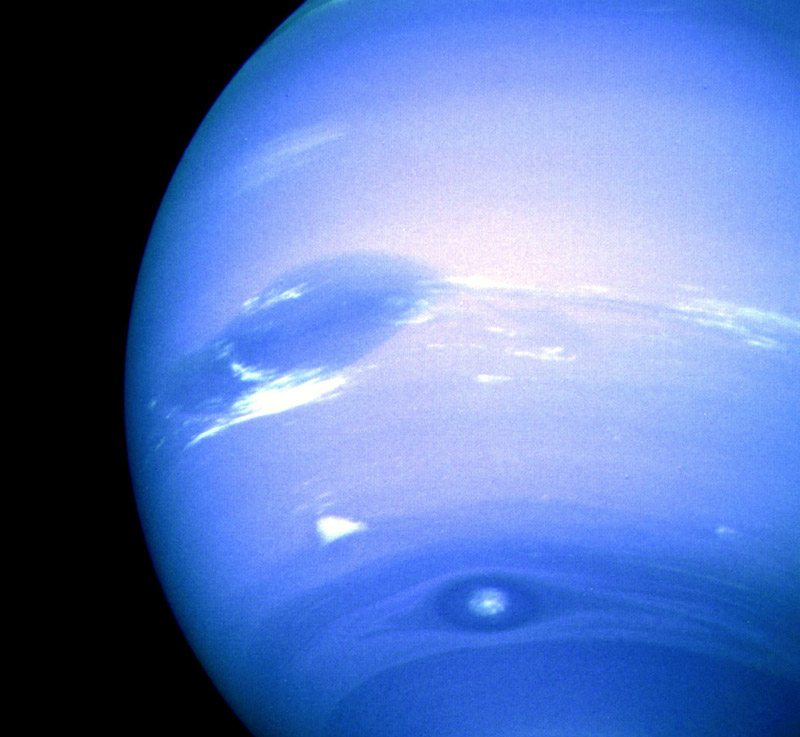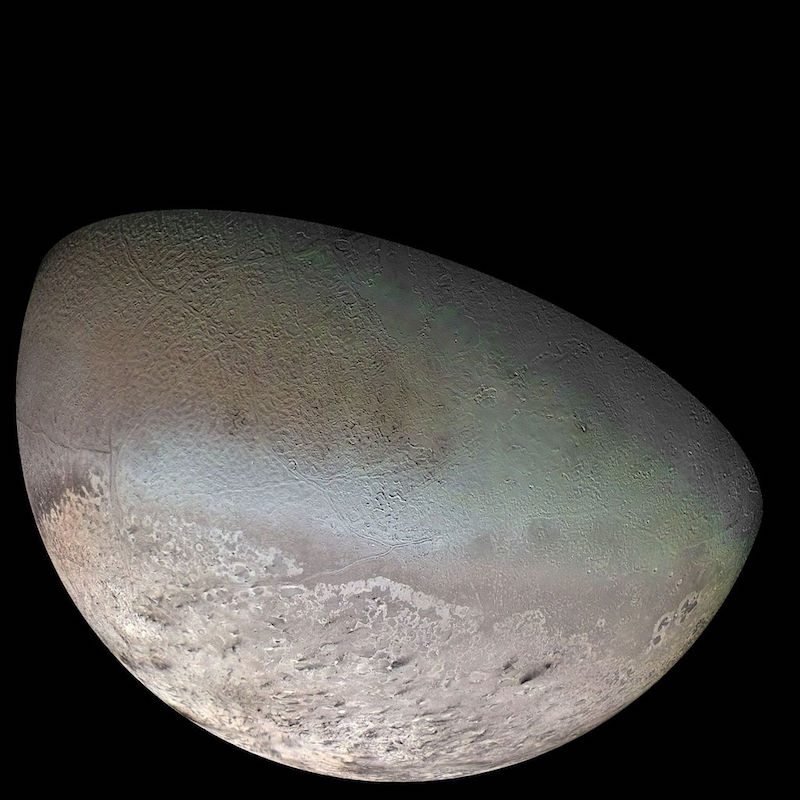Neptune
Episode #8 of the course Introduction to the Solar System
Since Pluto’s demotion to a dwarf planet, Neptune now holds the title of the new farthest planet from the Sun, located at 2.8 billion miles (4.5 billion km).That’s 30 times farther from the Sun than Earth. In fact, that’s so far away that it took Voyager 2, the only spacecraft to observe Neptune up close, nearly 12 years to reach the planet, even while travelling at a speed of 35,000 miles (56,000 km) per hour. The equatorial circumference of Neptune measures around 96,129 miles (154,704 km), which makes it four times the size of Earth.

Size comparison of Neptune and Earth

Animation of Neptune’s and Earth’s revolution around the Sun
Neptune is considered one of the hydrogen and helium gas giants in our solar system, and like Uranus, it is one of the two outer planets known as an “ice giant.” Indeed, scientists believe this blue planet is made up of 60-70% ice. The outermost layer of the planet is an icy atmosphere (composed primarily of hydrogen and helium), and beneath that is a mixture of slushy ice and water instead of a definite surface layer. Just beyond is a mixture of water and ammonia that serves as the planet’s mantle and contains more than ten times the mass of Earth. However, like Earth, Neptune has a rocky core that consists of iron and other metals.

The internal structure of Neptune:
1. Upper atmosphere, top clouds
2. Atmosphere consisting of hydrogen, helium and methane gas
3. Mantle consisting of water, ammonia and methane ices
4. Core consisting of rock (silicates and nickel–iron)
The planet gets its unique blue color thanks to methane, a chemical that absorbs red light and reflects blue light. It also exhibits large dark spots (or storms) that occasionally appear and disappear. Some of these dark spots are so massive that their diameter is larger than that of planet Earth. In addition to dark spot storms, Neptune also suffers from extremely fast winds that are so fast, in fact, that they frequently break the sound barrier and can reach speeds up to 1,500 mph (2,400 kph).

The Great Dark Spot (top), Scooter (middle white cloud), and the Small Dark Spot (bottom), with contrast exaggerated
Much like its neighbor (Uranus), Neptune also has moons—14, to be exact. Triton is the largest and most commonly known and was discovered less than three weeks after Neptune itself. Triton is not only the seventh largest moon in the solar system, but it is also the only major moon with a retrograde orbit (meaning that it revolves in the direction opposite of the planet’s rotation). Its unusual rotation suggests that it did not originate in Neptune’s orbit but instead got caught inside it after its formation. Triton is also one of the few moons known to be geologically active, with geysers periodically breaking through the crust and spewing water and ammonia onto the moon’s surface.

A Voyager 2 mosaic of Triton
Rather than having been discovered by astronomers peering at the sky through a telescope, Neptune was in fact located through mathematical predictions. French mathematician Urbain Joseph Le Verrier, having noticed a peculiar variation in Uranus’ trajectory, proposed that an unknown planet could be responsible for the unexpected changes. In 1846, his theory was confirmed. Neptune was then named after the Roman god of the sea (known to the Greeks as Poseidon).
Recommended book
Share with friends

